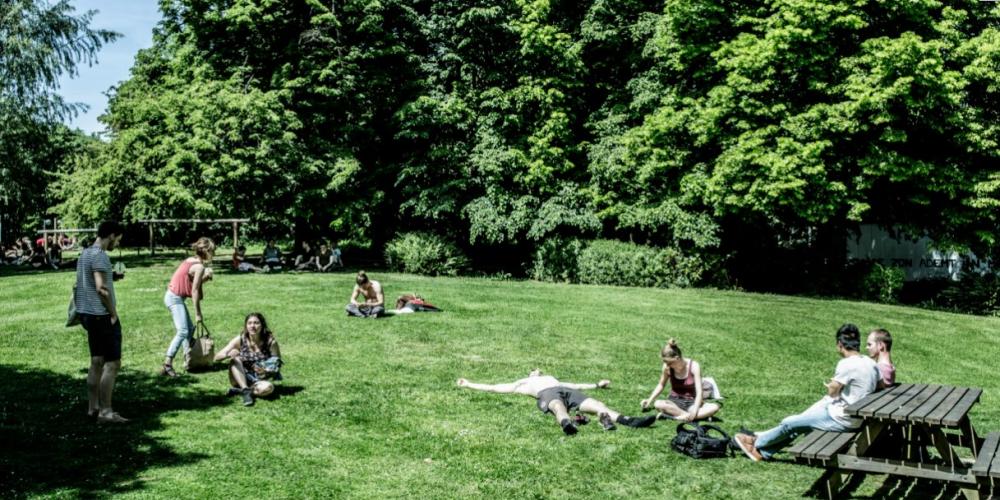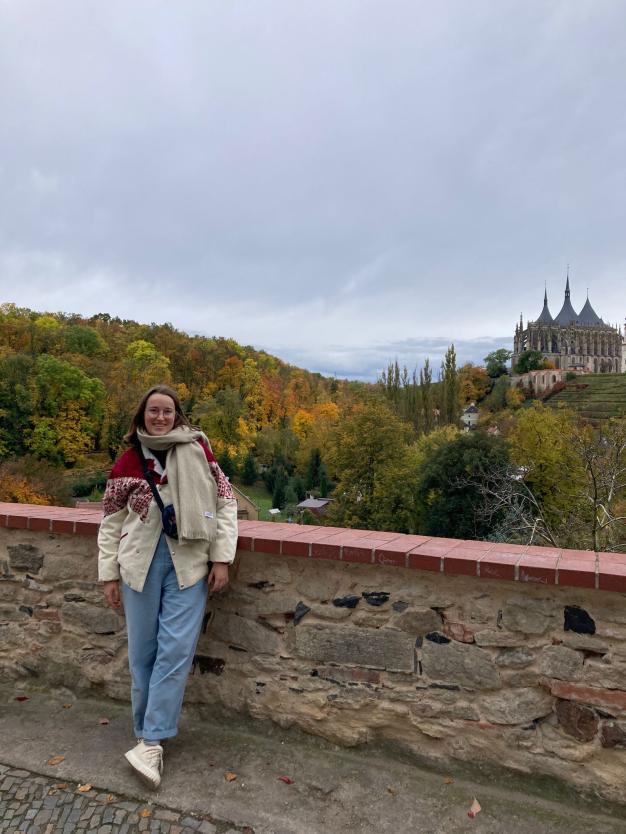
Climate adaptation and mental well-being can go hand in hand – and that’s true on campus too. Green campuses, where the focus is on nature in open spaces, can help us achieve that. For her Geography thesis, undergrad student Lotte van Beurden took a dive into nature. Or rather, she looked at our Etterbeek campus through green-tinted spectacles. She explains more about the positive impact that green campuses can have on our well-being.
Why did you choose to focus on this issue?
Lotte Van Beurden: “The subject of urban green spaces is really exciting. Cities are growing all the time and it’s crucial to give people who use public space a good quality of life. Green spaces – and that means green campuses too – are an important part of that.”
What exactly is a green campus?
“Not every university is made up of a single large campus, so there isn’t a strict definition. It goes without saying, though, that the amount of green space is a deciding factor. The experience of nature plays a major role too, including on the positive impact that a green campus can have.”
Can you explain more about that? What positive impact has research demonstrated?
“There are big advantages for users and the surroundings. Green spaces in an urban environment can act as a buffer against the effects of climate change. In hot weather, they act as cooling systems for humans and animals. There is also a clear benefit to mental well-being: being able to go outside between classes and relax in a natural environment is a natural stress reliever.”

"The VUB campus is definitely on the right track.”
So, should we create wilder green spaces? Or is a lawn sufficient?
“Grass absolutely contributes to the concept of a green campus. In terms of biodiversity, grass is less valuable, but socially it offers lots of benefits. It acts as a green outdoor meeting place. If a space is more open, with lots of grassy areas, that provides a greater sense of security. With more bushes and reduced visibility, that sense of security decreases.”
What’s your own experience of the VUB campus, as a student?
“Personally, I think the campus is very welcoming. If the weather is nice, you have plenty of green spots where you can have lunch outside. And to me, the environment feels safe. Perhaps there could be more work done on biodiversity, but that’s a balance you have to make based on the users of the space. The VUB campus, for me, is definitely on the right track.”
Are there best practices we should take into account when creating green campuses?
“Just make a start, and be smart about how you add nature to the mix of biodiversity, user comfort and beauty. In the fight against climate change, every new planting and removal of concrete is welcome. Focusing on elements that contribute to a natural experience, that’s what it’s about. Rewilding, removing concrete, water capture, cater infiltration… these are all good measures to take. But in an environment that is so intensively used, you have to continually weigh up the sense of security and biodiversity against each other.”